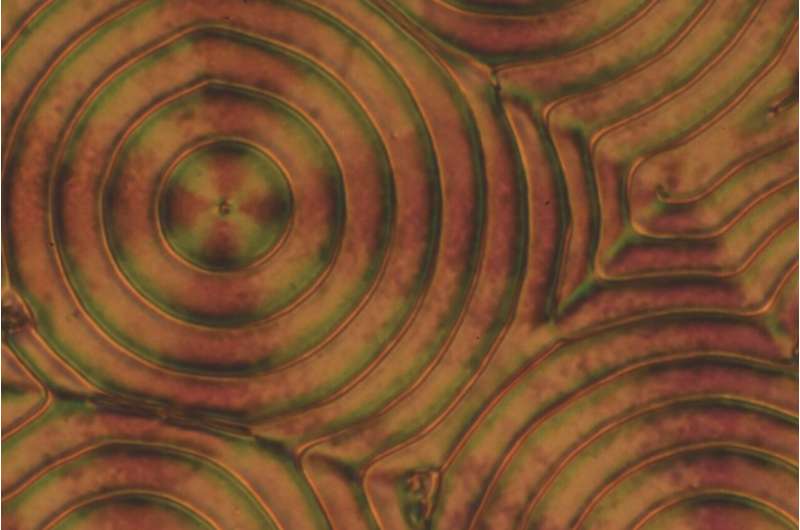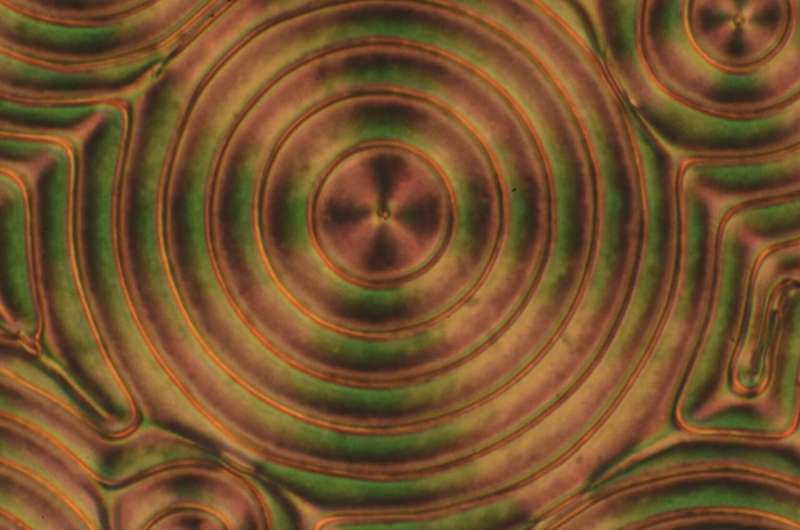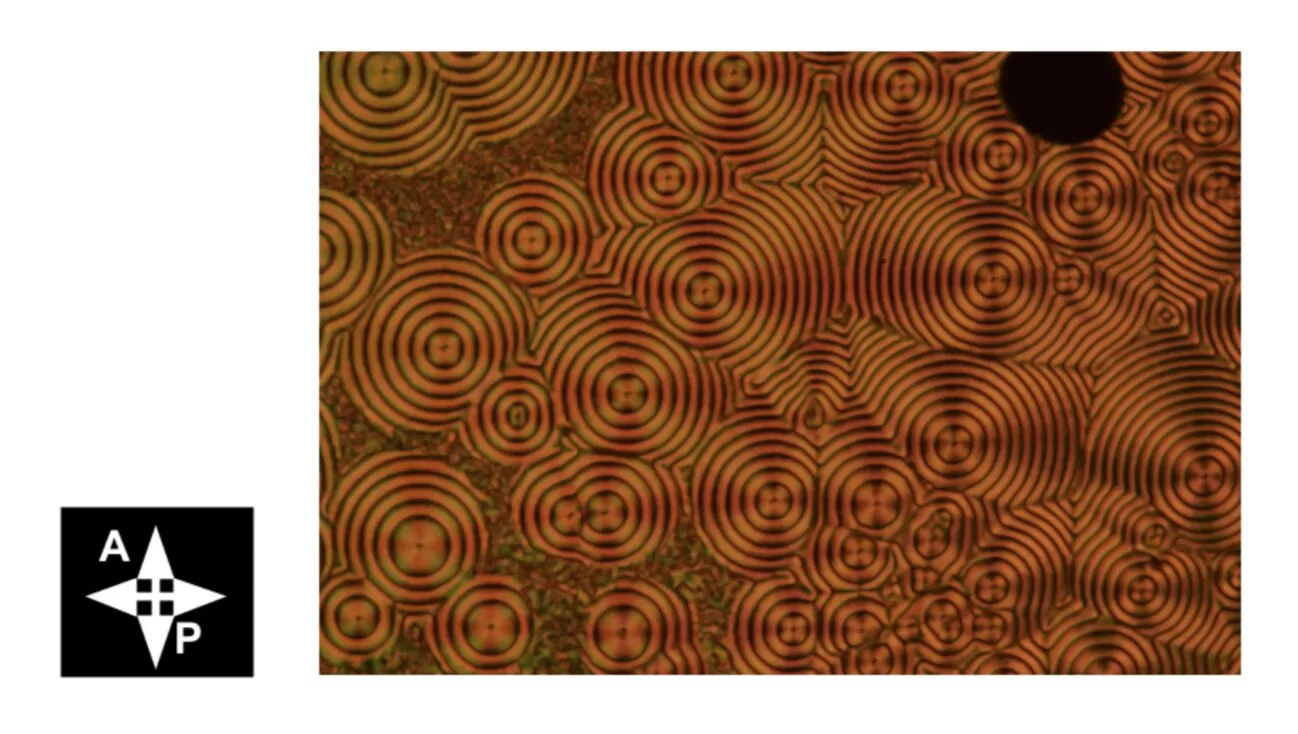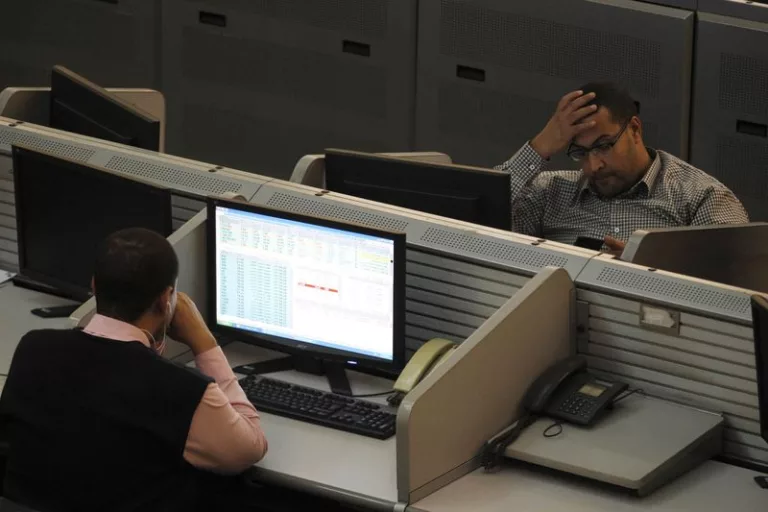Magnetic and electric dipoles, objects with two oppositely charged ends, have a similar symmetrical structure. One might thus assume that they exhibit similar internal structures and physical states.
Researchers at South China University of Technology in China recently showed that this is not always the case, by examining the topology of an emerging ferroelectric liquid-matter state with polarized helices, known as the “helielectric nematic state.” Their findings, published in Nature Physics, show that this state has a spontaneous toroidal polar topology generated through a flexoelectric effect that favors a specific form of splay deformation of polarizations.
While ferroelectricity in the nematic phase was hypothesized for decades, it was only experimentally demonstrated in 2020, by a research group at University of Colorado Boulder. This team successfully observed this elusive liquid crystal phase in RM734, a chemical compound synthesized by a research group at the University of Leeds in 2017.
“In collaboration with a chemist, Prof. Huang, our group started designing highly polar and fluidic liquid crystal materials and understanding their structure-property relationships in 2019, which still needed to be established at fundamental levels,” Satoshi Aya, the corresponding author of the current paper in Nature Physics, told Phys.org. “We built on the pioneering works of Mandle and Goodby (RM734 molecule) and a Japanese group at Kyushu University led by Prof. Kikuchi (DIO molecule). Notably, both RM734 and DIO were found in 2017, nearly at the same time.”
Up until recently, Aya and his collaborators have been compiling a molecular library containing various ferroelectric nematic and new polar liquid crystal materials. By analyzing materials in this library, which now includes approximately 300–400 materials, they were able to identify polar phases and unexpected phase transitions that lead to the formation of previously unknown polar topological structures.
“As a particular case, we found some ferroelectric nematic materials with relatively low shape anisotropy but high polarity can directly go from the isotropic liquid to the ferroelectric nematic phase in 2020,” Aya explained. “This allowed us to spontaneously generate ferroelectric nematic droplets floating in the isotropic liquid background. The spatial confinement leads to several unique polar topological textures, some known as polar merons, whose formation was attributed to be mainly driven by polar interactions in the ferroelectric fluids.”
The phase previously uncovered by Aya is driven by a conventional Frank elasticity, as well as flexoelectricity and depolarization field effect. This interesting discovery inspired them to further explore the competition between polar interactions and liquid crystal elasticity in the phase.

“In our recent study, we initially aimed to understand how chirality would be coupled with the flexoelectricity and depolarization field effect,” Aya said. “Therefore, we doped chiral dopants into the ferroelectric nematic molecule used in one of our previous papers published in Nature Communications. Of course, at the beginning, we did not expect such a lovely, unprecedented texture to appear.”
In their recent study, Aya and his colleagues employed two primary experimental techniques. First, they used a second-harmonic generation interferometric microscopy, leveraging a nonlinear optical response that emerges in systems where the inversion symmetry is broken.
This first method allowed them to visualize the polar orientational field in their sample. Subsequently, the researchers used a technique called polarized fluorescent microscopy to double-check the orientational field obtained by second-harmonic generation interferometric microscopy.
“Interferometric microscopy and polarized fluorescent microscopy are complementary methods,” Aya explained. “While the former probes the head-to-tail inequivalent (polar) orientational field, the latter captures the head-to-tail equivalent (nonpolar) orientational field.”
Overall, Aya and his collaborators gathered very interesting observations. First, they showed that unlike crystal-based ferroelectric materials, in which only one or two strong polar interactions dominate and compete with the lattice strain, ferroelectric fluids balance interactions with much greater freedom.
“This delicate balance can lead to multiple influencers determining the topological details,” Aya said. “For example, in simple words summarizing the current case, the competition between chirality and confinement judges whether an in-plane and untwisted field is favored; flexoelectricity determines where domain walls should be generated; and finally, depolarization field dictates what type of polar orientational field should be generated around the domain walls.”
The physical process observed by Aya and his colleagues has several stages, in which different interactions contribute to details of the materials’ final topology. Their findings suggest that combinations of polar and liquid crystal interactions with different magnitudes could lead to a diverse range of unfamiliar polar topologies. Building on this insight, researchers could soon set out to observe new polar topologies, by designing molecules with different shapes and polar properties.
“The second key implication of our findings is that the depolarization field is a vital factor that affects the electric-field-driven dynamics in confined ferroelectric fluids,” Aya said. “This message is very important. Imagine you now have a uniform alignment of the polar orientational field to a particular direction in free space. If one applies a DC electric field antiparallel to the polarization, it is easy to expect that the polarization field will reorient to the field direction, as verified by the UC Boulder group on ferroelectric nematics in 2020.
“We found that this scenario does not hold for the confined nematics. A similar work, but with a slightly different process, was also published one year before our publication.”

Aya and his collaborators found that the topological structure observed by the group at UC Boulder does not apply to confined nematics, where nontrivial depolarization fields can develop via complex spatial polar orientation fields. In the phase they observed, both the space charge due to the splay deformation of the orientation field and the interracial charge created on interfaces or near orientational singularities act as the source of the depolarization fields.
“On one hand, one has to realize this matter when they do experiments using ferroelectric fluids, especially when they want to judge to which direction the polarization orients by using electric field (as the Boulder group did),” Aya said. “On the other hand, as a naïve perspective, I guess the nontrivial depolarization field can also be considered as a tool for generating complex polarization patterns (so topological engineering or topological switching) that would be impossible by using complex electrodes.”
This recent work by Aya and his collaborators could soon pave the way for further studies investigating the polar-interaction-driven toroidal polar topology they uncovered. In addition, it could open new opportunities for the development of switchable ferroelectric-liquid-matter optoelectronic devices.
“Of course, it isn’t easy to shed light on the mechanism working behind forming unique topologies only from the experimental side,” Aya said. “In this perspective, along with developing new molecules with different balances of interactions mentioned above, we will and have been working on developing a theoretical background for polar nematic fluids and exploring new polar topologies by adjusting the balance between polar and liquid crystal interactions. Moreover, designing polar topological networks towards topological ferroelectrics is also very challenging.”
In some of their previous studies, the researchers showed that a complex polar orientational field is an advantageous feature for the realization of systems exhibiting a nonlinear optical amplification known as phase-matching. As part of their future research, they would like to build on their findings to facilitate the potential development of these systems.
“Polarization engineering in crystal-based ferroelectrics is known to be very difficult,” Aya added. “Thus, developing previously impossible polarization engineering in polar fluids and therefore enabling the fabrication of highly efficient nonlinear optical devices will be one of our follow-up targets.”
More information:
Jidan Yang et al, Flexoelectricity-driven toroidal polar topology in liquid-matter helielectrics, Nature Physics (2024). DOI: 10.1038/s41567-024-02439-7
© 2024 Science X Network
Citation:
Study unveils a spontaneous toroidal polar topology in the helielectric nematic state (2024, March 28)
retrieved 28 March 2024
from
This document is subject to copyright. Apart from any fair dealing for the purpose of private study or research, no
part may be reproduced without the written permission. The content is provided for information purposes only.
Reference :
Reference link
























+ There are no comments
Add yours